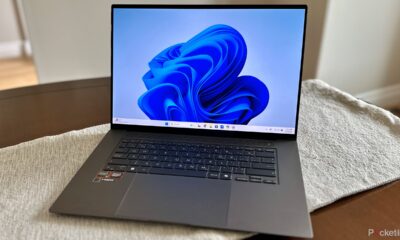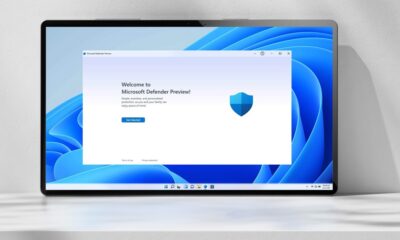Tech News
How to Install and Upgrade GPU Drivers in Windows 10
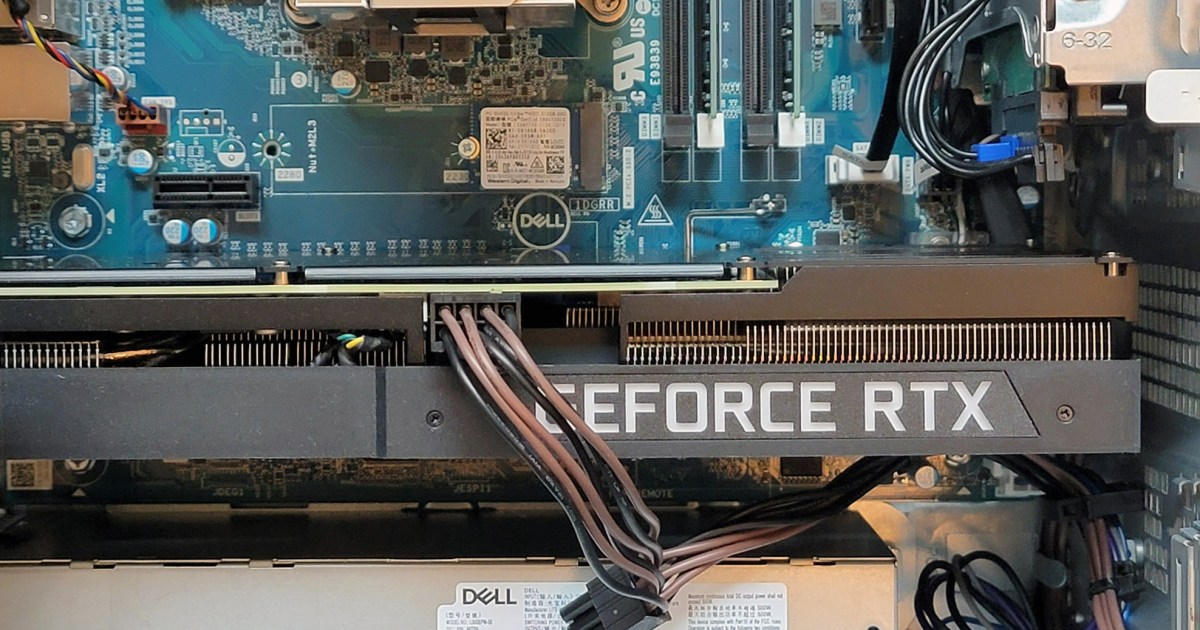
If you want to make sure that your graphics card is running at its optimal speed with all the latest features, it is crucial to install the latest GPU drivers. Graphics drivers help optimize new games, fix bugs, and can even improve the performance of your card. In this guide, we have outlined a simple two-step process for installing and upgrading GPU drivers in Windows 10.
Below, you will find steps for the best graphics cards from Nvidia and AMD.
Before you begin: Identify your GPU
Before you can install or upgrade your GPU drivers, you need to know the model of your GPU. If you already know what graphics card you have, you can skip to the steps below. If you are unsure, don’t worry. It is easy to find out which GPU you have.

Get your weekly teardown of the tech behind PC gaming
Press Windows Key + S and enter System Information. Select the top result to pull up a window with everything you need to know about your computer. In the left menu, expand the Components option and select Display. The main window will refresh with some information about your display and graphics card. You can find your graphics card model under the Name item.
You can also find your GPU driver version in this window if you want to manually check if you have the right version. However, both AMD and Nvidia offer software that can automatically detect if your driver needs an update.
Step 1: Install graphics card driver software
Nvidia and AMD provide graphics driver software that can automatically detect your card and inform you of any available updates. These applications are user-friendly, so we recommend installing them to easily upgrade your GPU drivers in the future.
Nvidia GeForce Experience
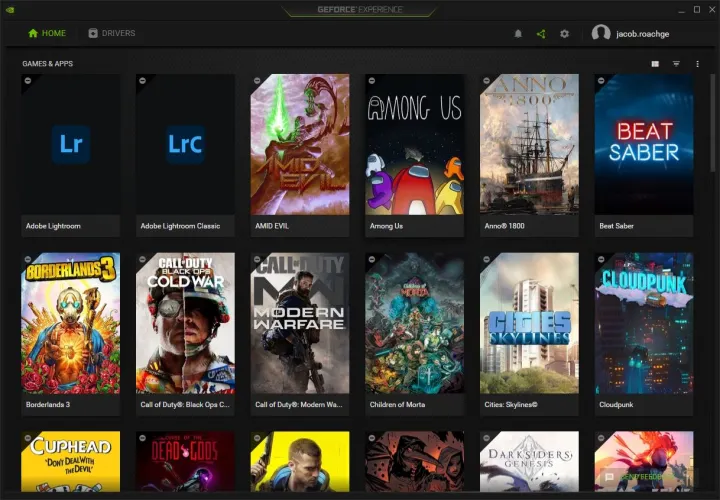
Nvidia’s graphics card drivers are available through GeForce Experience, which also includes features like game capture through ShadowPlay and automatic game optimizations for supported titles. Download GeForce Experience from Nvidia’s website and follow the installation steps. Once installed, GeForce Experience will automatically launch and attempt to detect the games installed on your PC.
If you prefer not to use GeForce Experience, you can manually update your graphics driver. Visit Nvidia’s product search page to find your graphics card. Make sure to set Download Type to Game Ready Driver (GRD) and Operating System to Windows 10. Simply identify your product series and the card you have (as mentioned above).
Run the installer for the latest driver, and you’re good to go. During the installation process, Nvidia will inquire if you want to install GeForce Experience, but you can choose to install just the driver.
AMD Radeon Software
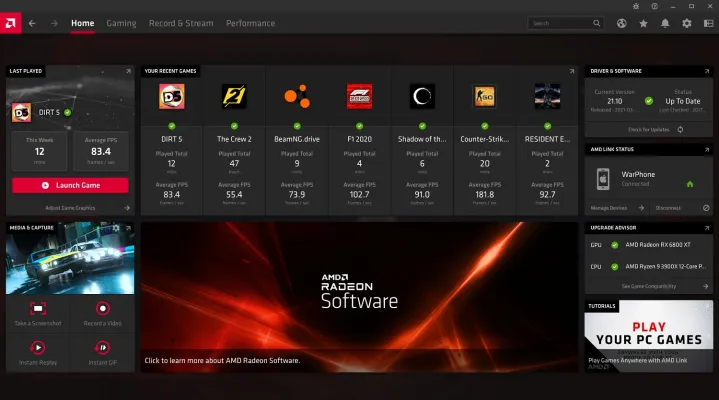
AMD’s drivers are accessible through Radeon Software, which offers various features for AMD graphics cards. Apart from updating your driver, the software allows you to monitor temperature and performance within your computer, set up a livestream scene, and utilize features like Radeon Chill and Radeon Anti-Lag. Download the latest version of Radeon Software from AMD’s website and follow the installation instructions.
Alternatively, you can manually locate your card, but you will still need to install the driver through Radeon Software. Use AMD’s product search tool to find your card, which is more user-friendly than Nvidia’s tool. Select Graphics as your category, then choose the product series and your specific card.
On the following page, expand the Windows 10 – 64-bit Edition dropdown to view the available drivers. Look for the driver with the Recommended tag under Revision Number. You may also see an Optional driver, which includes upcoming features but may have bugs or other issues. Click Download, follow the installation steps, and you’re all set.
Step 2: Install the GPU driver
With the software installed, updating your GPU driver is a breeze. You do not need to know the specifics of your graphics card or the required driver. Both software applications will automatically recognize your system and recommend the latest driver.
Nvidia GeForce Experience
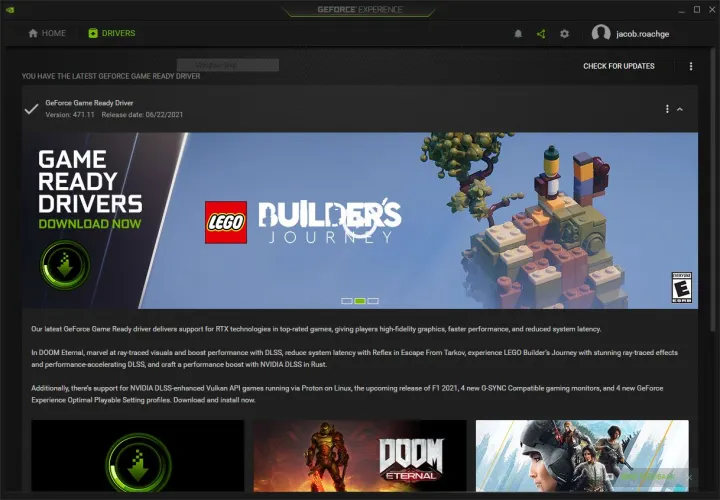
Once GeForce Experience is installed, open the program and go to the Drivers tab. You should see the latest available driver, which you can download. For confirmation, click the three dots in the top right corner, select Game Ready Driver, and then choose Check for Updates. Nvidia also provides studio drivers optimized for creative applications. You can have either the Game Ready Driver or the studio driver, not both. For most users, we recommend the Game Ready Driver.
After checking for updates, click the large green Download button. The installation process only takes a few minutes, during which your screen may temporarily go black and your sound may cut out. Both will return once the installation is complete. Restart your computer after installation, and you’re good to go.
You can check for new updates by accessing GeForce Experience from the taskbar.
AMD Radeon Software

AMD’s Radeon Software offers more features, but finding the necessary drivers is still simple. Moreover, Radeon Software allows for automatic installation of new updates, reducing the need for manual updates.
Launch the software and click on the Settings icon in the top right corner. Ensure you are on the System tab on the subsequent page and check the Software & Driver section. Click on Check for Updates to see if there is a new driver available. If you are installing the driver for the first time, Radeon Software will automatically detect your card and download the latest driver during the installation process.
Below this section, you can set up automatic installations. Activate the toggle switch next to Check for Updates to enable automatic checks for new driver versions. This feature is enabled by default. Further down, you can toggle on Download Drivers & Software to automatically install the latest driver and software versions. Lastly, ensure that Preferred Software Version is set to Recommended.
Using Intel graphics?
As evident from this guide, it focuses on Nvidia and AMD graphics card users. If you have integrated graphics from Intel, you can find the most recent graphics drivers on Intel’s software download page.
-

 Destination8 months ago
Destination8 months agoSingapore Airlines CEO set to join board of Air India, BA News, BA
-

 Breaking News9 months ago
Breaking News9 months agoCroatia to reintroduce compulsory military draft as regional tensions soar
-

 Tech News11 months ago
Tech News11 months agoBangladeshi police agents accused of selling citizens’ personal information on Telegram
-

 Breaking News9 months ago
Breaking News9 months agoBangladesh crisis: Refaat Ahmed sworn in as Bangladesh’s new chief justice
-

 Productivity11 months ago
Productivity11 months agoHow Your Contact Center Can Become A Customer Engagement Center
-

 Toys11 months ago
Toys11 months ago15 of the Best Trike & Tricycles Mums Recommend
-

 Guides & Tips9 months ago
Guides & Tips9 months agoHave Unlimited Korean Food at MANY Unlimited Topokki!
-

 Gadgets3 months ago
Gadgets3 months agoSupernatural Season 16 Revival News, Cast, Plot and Release Date

